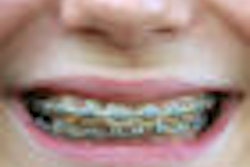
NEW YORK (Reuters Health) - Kids born with cleft palate were no more likely than kids in the general population to suffer from hoarseness in a new study of almost 500 children who had undergone palate-repair surgery.
Just 5.5% of kids with cleft palate in the study group complained of hoarseness -- compared with estimates of between 6% and 34% of kids without the condition who experience hoarseness, often as a normal result of talking loudly or yelling.
"I expected there to be more children than we found that had vocal chord abnormalities," Dr. Todd Otteson, one of the study's authors from Children's Hospital of Pittsburgh, told Reuters Health. Among doctors who treat these kids, he said, "the general feeling is that ... kids who have a cleft overcompensate with their voice, and are therefore more likely to be hoarse."
Cleft palate happens when tissue in the mouth doesn't fuse together properly during a baby's development in the womb, leaving an opening on the roof of its mouth. Heredity plays a role in whether babies are born with cleft palate, as can some environmental factors, such as smoking and alcohol use by the mother during pregnancy.
Cleft palate sometimes occurs together with a similar condition called cleft lip, and together they are the most common birth defect in the U.S., according to the National Institutes of Health (NIH). About 2,500 babies are born with cleft palate in the U.S. every year -- or about six babies per every 10,000 births. Some 4,200 babies -- about one in every 1,000 -- are born with cleft lip, with or without a cleft palate.
In cases of cleft palate, surgery is generally done around a baby's first birthday to repair tissue on the roof of the mouth.
After the initial surgery, however, some kids with cleft palate continue to have problems with hearing or speaking, including hoarseness, and often additional surgeries are needed as kids get older. Hoarseness is a risk, some researchers think, because kids with cleft palate may have to put extra strain on their vocal chords to pronounce some sounds correctly.
"There are a couple of strikes against them, communication-wise," Otteson said. "They're more prone to have ear (infections) causing potential hearing issues. Then it's another issue if they're hoarse and therefore having issues generating a good, strong voice as well. Then, there's just the speech issues that go along with the cleft" such as having a nasal voice, Otteson said.
In the study, Otteson and his colleague, Dr. Jacob Robison, examined the charts of 487 kids with a surgically repaired cleft palate who had been seen at a Children's Hospital of Pittsburgh clinic between 2005 and 2009. Some of those patients had also been treated for cleft lip. Of all the kids, 27 -- or 5.5% - had complained of hoarseness, on average when they were about 4 or 5 years old. The results are published in the Archives of Otolaryngology -- Head & Neck Surgery.
The findings, the authors say, suggest that kids with cleft palate are no different from their peers with regard to hoarseness and that problems with hoarseness may be under-recognized in the general population.
Most of the kids in the study who did report hoarseness had a condition called velopharyngeal insufficiency in which the muscles on the roof of the mouth don't close completely while kids are speaking. Those muscles need to close in order for kids to pronounce some consonants correctly - otherwise, air from the lungs escapes through the nose instead of the mouth, interfering with speech.
Otteson said the condition could be a residual effect after the initial cleft palate surgery, but could be fixed with further surgeries. Still, it's not clear the condition caused hoarseness in this particular study.
Dr. Michael Cunningham, who heads the Craniofacial Center at Seattle Children's Hospital, estimated that about 25% to 30% of kids with cleft palate will need additional surgery on the roof of the mouth to address problems with speech.
"People's concept of cleft lip and palate is that it's a common, very treatable slam-dunk procedure," Dr. Cunningham, who was not involved in the current study, told Reuters Health. "But it's certainly a childhood-long, if not lifelong issue for people in terms of all the interventions that are done."
Besides speech-related surgeries, kids with cleft palate may get additional procedures to improve their hearing or visual appearance. The NIH estimates that the total cost of treating the kids born each year with cleft palate or cleft lip is about $700 million.
And even though hoarseness may not prove to be a significant problem on its own, Cunningham said, hoarseness and poor speech in general can add to the burden of kids with cleft palate, who often face teasing and bullying from their peers.
By Genevra Pittman
Last Updated: 2011-01-19 16:13:21 -0400 (Reuters Health)
Source: https://bit.ly/f0jkhn
Archives of Otolaryngology -- Head & Neck Surgery, online January 17, 2011.
Copyright © 2011 Reuters Limited. All rights reserved. Republication or redistribution of Reuters content, including by framing or similar means, is expressly prohibited without the prior written consent of Reuters. Reuters shall not be liable for any errors or delays in the content, or for any actions taken in reliance thereon. Reuters and the Reuters sphere logo are registered trademarks and trademarks of the Reuters group of companies around the world.



















